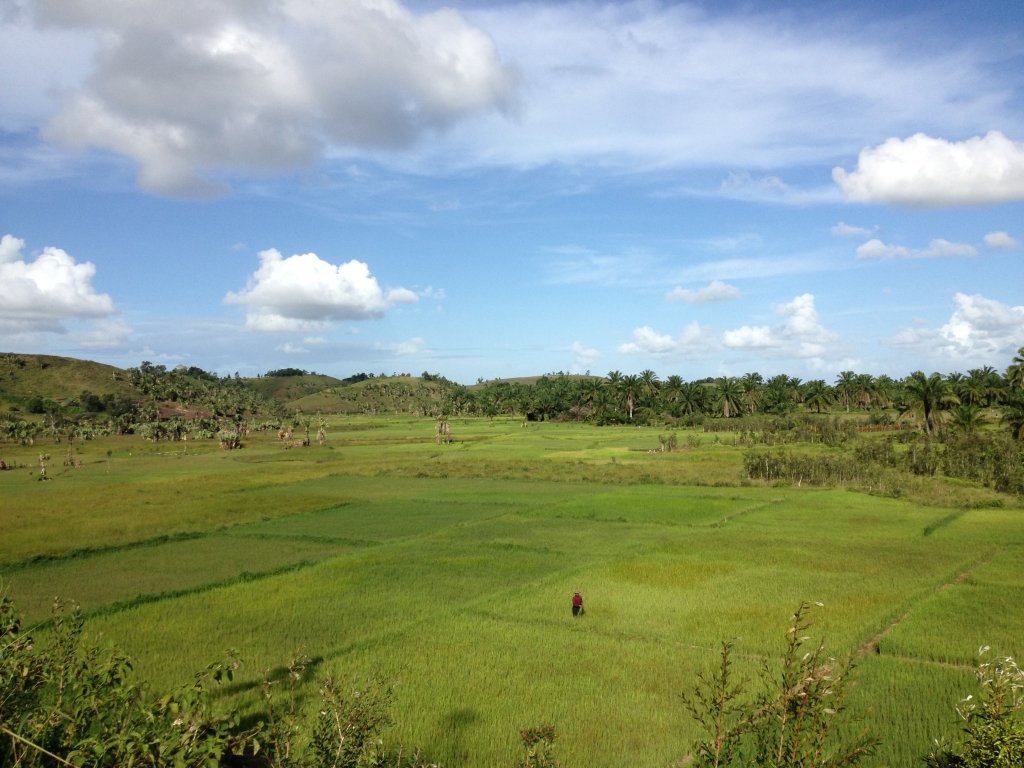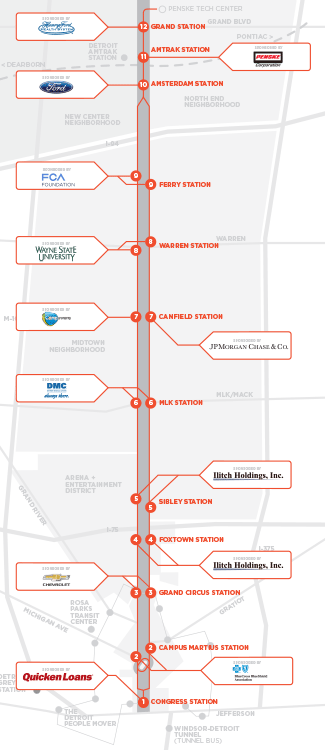A Look from My Lens
I decided not to get a car* when I came back from the Peace Corps for one reason: I wanted a small, daily reminder of the constant struggles Malagasy people face in regards to transportation. Right now, there are thousands of people all over the island walking dozens of miles to work in bare feet. When I say work, I’m not talking about the office on the corner a few miles down the road. I’m talking about the haggard rice field in the middle of nowhere that any American farmer would probably use a fleet of John Deere equipment to tend to. Instead, these frail, often malnourished men and women (and sometimes young children when parents can’t afford the cost of education) spend their days hacking away with small hand tools that our society deemed “ancient” and “inefficient” a long, long time ago. Then, they walk back home and repeat for eternity. A good day might mean that the ‘bread winner’ brings home the equivalent of $1 USD.

A rice field near my village in Madagascar
I felt physically sick about the thought of coming back to the States after living in that culture for three years, walking into a car dealership, and leaving in a brand-new 2015 automobile. Because transportation is what it is in Madagascar, I developed a passion for biking and decided it would remain my main form of transportation in Detroit. If alternative transportation methods existed in Detroit, I might have foregone the bike, too.
Transportation Issues in Detroit
Speaking of transportation in Detroit, Challenge Detroit recently put together a really captivating discussion about transit in the city featuring panelists from the Regional Transit Authority, Detroit’s new Bike Share program, the M-1 Rail, GM’s car sharing program “Maven,” and Tech Stars. They dropped a whole wealth of knowledge on us that really drove (pun intended) home the nightmare that is transportation in Detroit. A few key points that struck a chord included:
- The average person spends roughly $8,000 per year on their car (insurance, gas, monthly car payments, etc).
- 92% of people in Detroit can’t access their job via public transit in under an hour.
- Despite this city’s 170 miles of bike lanes (many of which begin and end without a moment’s notice), there are exactly 0 miles of bike lanes downtown, an area of the city that has served as the poster child for our revitalization.
- And the big one: a 14-year, $1 billion reconstruction project is set to start on I-75 this summer. 80 percent of this $1 billion project will be federally funded and the rest will come from your tax dollars.
I-75 By the Numbers
Sometimes, we, as a society, have a tendency to throw around astronomically high dollar amounts like the one above without really understanding their impact, so I’m going to throw some more obscenely large figures at you in hopes of putting this in perspective.
- The 3.3-mile M-1 rail is slated to cost $140 million, a large portion of which comes from private donors (Read More).

A look at the list of stops for the future M-1 Rail
- Detroit Bike Share will cost about $2 million to launch and $1 million per year to maintain. The initial plan includes 350 bikes at 35 stations across the greater downtown Detroit area (Read More).
If we applied $1 billion dollars to the expansion of these public transportation projects, we could:
- Build SEVEN more 3.3-mile M-1 rails, which would allow for expansion north to Royal Oak with another 15 miles of light-rail to spare.**
AND…
- Add 210 more bike share stations and 2,100 bikes around the city of Detroit. There would still be enough money left over to cover the operating costs for each station for one year.**
Granted, securing large sums of money or deciding how it is used is not as easy or autocratic as I’ve just made it sound. I know that. As the fellows learned from the panelists, acquiring federal dollars is incredibly difficult. It’s apparently even more difficult to get money for new, untested transportation projects (i.e. the M-1 rail, hence the majority of private funding sources). Then, imagine how difficult it must be for a city that has a history of abusing and misappropriating government funds (i.e Kwame Kilpatrick). I’m sure you can see that the odds are stacked against us, for sure.
To give you a better idea, the I-75 project is slated to modernize interchanges, replace all vehicle and pedestrian bridges, and add a lane north and south (Read More) along a 17-mile stretch of I-75 in Oakland County.*** So, what are your initial thoughts? Would adding one lane in each direction alleviate congestion issues, particularly for commuters and around interchanges like I-696?
My Unsolicited Thoughts
Personally, I think it’s a poor decision. It’s almost ironic considering we live in an era where political figures constantly preach the importance of sustainability, yet this is one of the least sustainable and costly solutions I could imagine.
In my opinion, there will always be more cars to fill up the freeways. If public transportation is not an option, let alone a reliable one, cars will continue to reign supreme as the commuter’s transportation method of choice. All of us are rooting for Detroit’s comeback, right? Well, Detroit’s comeback would most likely lead to a population increase, which would mean that by the year 2030 (the proposed completion date for the I-75 project) we’ll probably be talking about adding another lane to I-75 and a bunch of other highways. It’s a never-ending cycle of money, traffic, and those orange barrels we all hate.
We also need to consider the socio-economics of Detroit. We need cost-effective solutions to our transportation issues because cars are not a luxury that everyone in Detroit can afford.
Closing Thoughts
After living in Madagascar, it seems wrong not to be grateful for the fact that we actually have the resources to complete such lofty reconstruction projects. Then again, there is a huge part of me that will never stop thinking about the Malagasy standard of living – about my Malagasy friends who are lucky to make $1 per day and probably have no idea what $1 billion really means. These are people who walk dozens of miles every day and never complain because there is no other way.
Perspective is everything. We could use a little more.
Disclaimers
*My girlfriend and I haven’t bought a car, though we were close at one point in November. Through the winter we’ve been able to borrow a car from my family whenever we really needed them.
**The project costs mentioned in this blog are factual based on articles I have provided. However, I used my brain to calculate what $1 billion might do for public transportation in Detroit. My apologies if there are any mathematical errors. Those estimations are based on the current costs of the M-1 Rail and the Bike Share program.
***NO part of the I-75 reconstruction project is located in Detroit. I am using the government’s appropriation of funds for this particular project as an example of how I believe our federal dollars could be spent to help a greater number of people and provide a more sustainable future for transportation.
